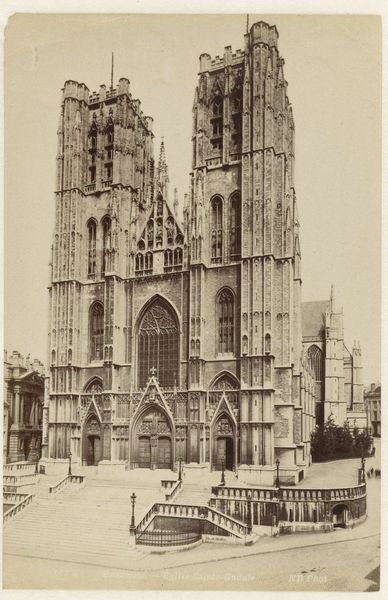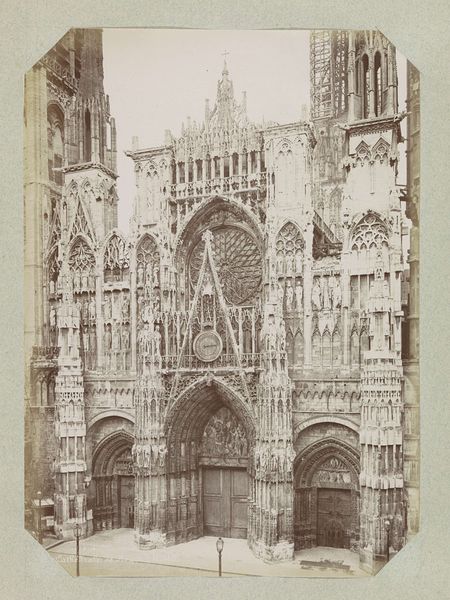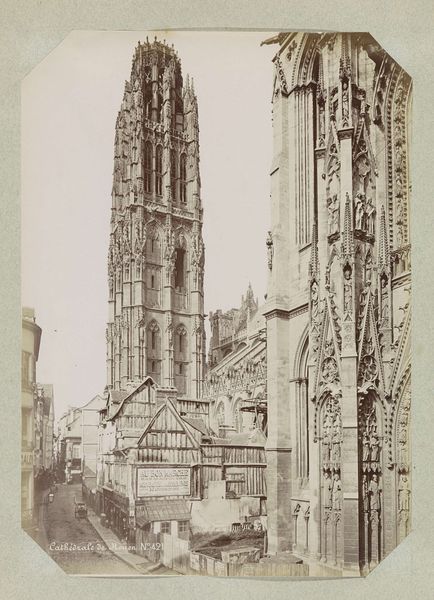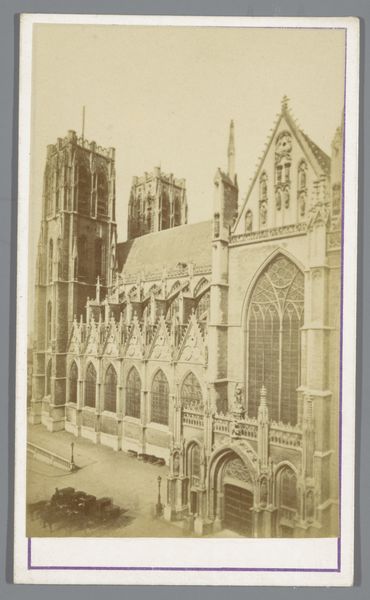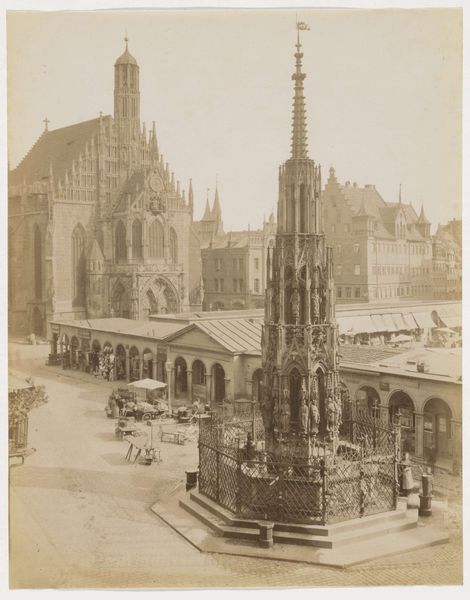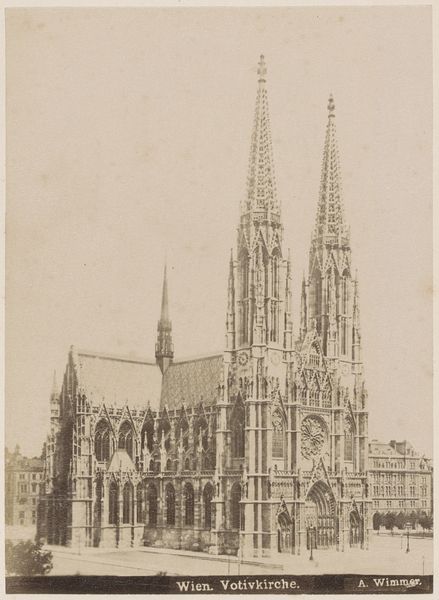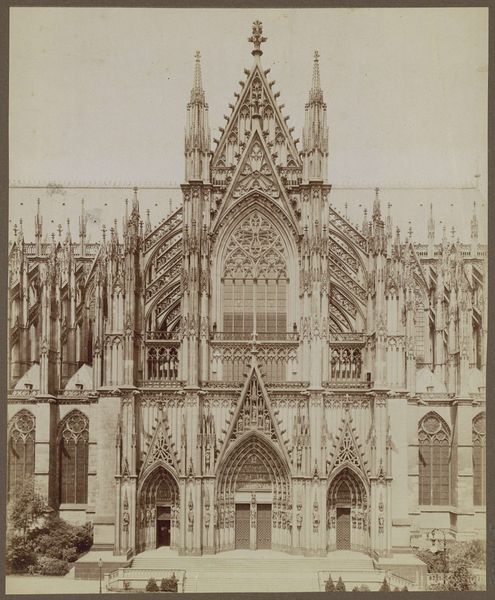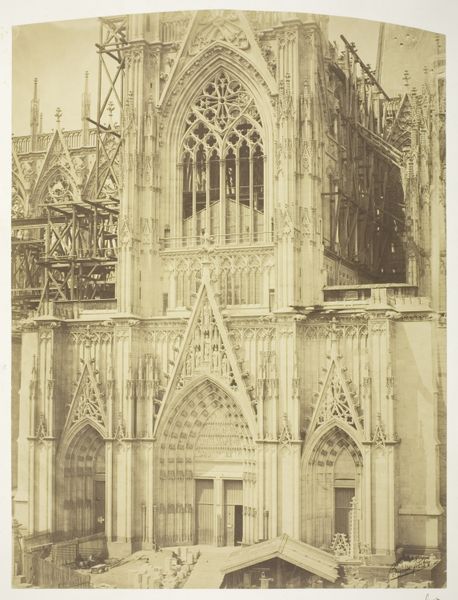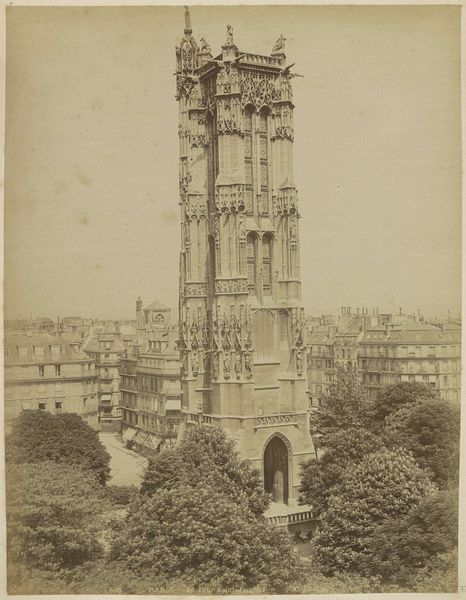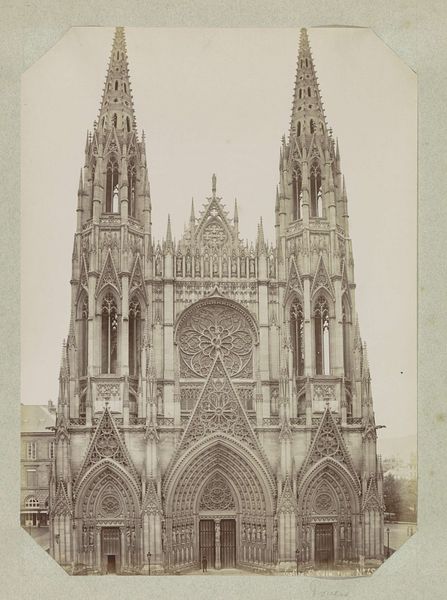
Dimensions: height 183 mm, width 119 mm
Copyright: Rijks Museum: Open Domain
Curator: Looking at this albumen print, “Kathedraal van Sint-Michiel en Sint-Goedele in Brussel” by Louis Antoine Pamard, taken sometime between 1860 and 1890, I'm immediately struck by its grandeur and sense of solemnity. It feels incredibly imposing. Editor: Indeed, and I’d venture that’s deliberate. Notice the long exposure times typical of albumen prints—freezing everything in place. This wasn't just a photograph; it was a demonstration of a process and also one of permanence. Consider the social and industrial context of this period. Mass production and the rise of photographic reproducibility altered how we viewed the world and materials. Curator: That’s fascinating. It certainly speaks to how the cathedral functions as a cultural symbol here. These twin towers dominate the cityscape. I can't help but think of them as potent symbols of religious and civic authority—reaching towards the heavens, demonstrating power through verticality. They are an aspiration, even. Editor: Absolutely. Pamard, the photographer, wasn’t just documenting; he was working with specific material constraints—the glass plates, the chemicals, the length of exposure. Albumen, derived from egg whites, isn't a neutral material; it becomes part of the final image. These factors give shape to our perception of Brussels at this time and its architectural achievements. He made a reproducible, material commodity that depicted the grand structure for consumption. Curator: That makes me think about the very deliberate placement of the cathedral within the frame, too. It's set against this vast sky—almost like it is alone in this landscape. What kind of emotional impact was Pamard trying to make? I imagine viewers were meant to feel in awe. Editor: Consider this material representation of an important public work, then, consumed and distributed during a time of growing bourgeois consumer culture, and think of this image's historical reproduction as material. These early photographic prints democratized images to some extent. They brought views like this, which were formerly for the wealthy who commissioned paintings, into the homes of ordinary citizens who now had the income to collect reproductions and visit sites in a dawning tourism industry. Curator: Seeing the cathedral not just as stone and mortar, but as a carefully crafted object born from the period, really deepens my appreciation for its lasting symbolic resonance. Editor: And seeing that Pamard operated in an ecosystem of industrial means of production, this changes our concept of him being the author of such photographs as unique objects. Thanks for exploring this image with me!
Comments
No comments
Be the first to comment and join the conversation on the ultimate creative platform.
